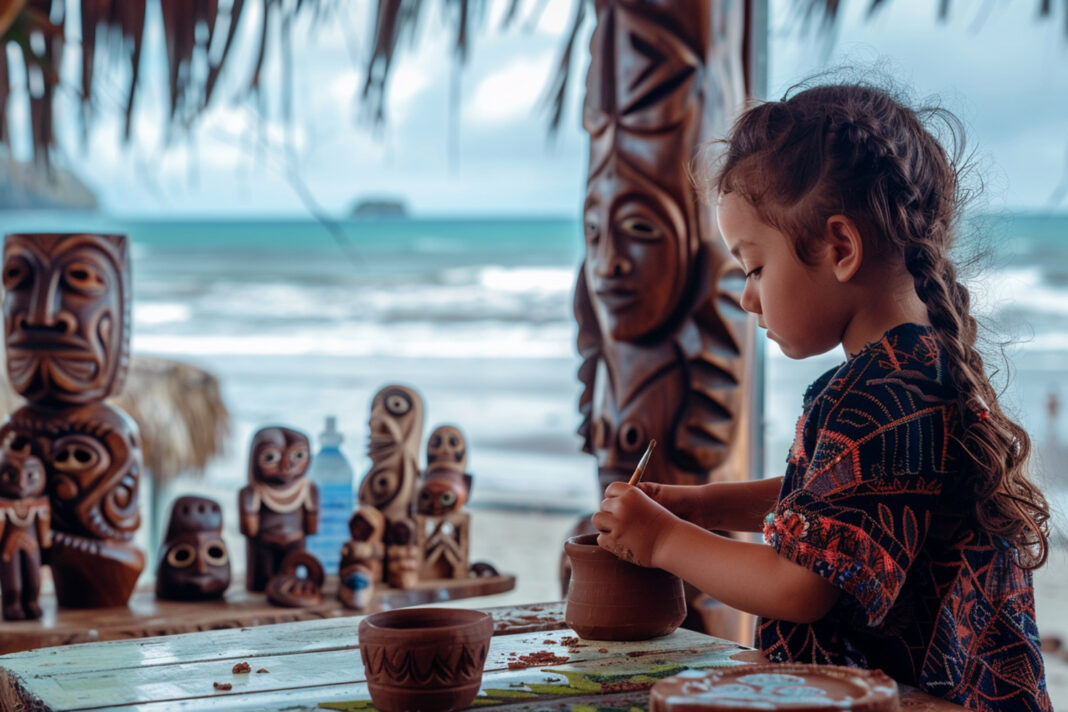Indonesia is a country rich in culture and traditions. Among its most remarkable legacies is Indonesian Arts and Crafts, a collective expression of creativity, heritage, and identity that has been passed down through generations. From intricate batik patterns to masterful wood carvings, each artwork reflects the stories, beliefs, and values of the Indonesian people.
In today’s modern era, Indonesian arts and crafts are not only cultural treasures but also important drivers of the creative economy. These works have gained international recognition, symbolizing the beauty and diversity of the archipelago.
The Diversity of Indonesian Arts and Crafts
The uniqueness of Indonesian Arts and Crafts lies in its diversity. Every region in Indonesia has its own artistic identity, often influenced by history, nature, and spiritual beliefs. Below is a table highlighting some of the most famous Indonesian crafts and their origins:
| Art & Craft Type | Region of Origin | Key Characteristics |
| Batik | Central Java, Yogyakarta | Wax-resist dyeing with symbolic motifs |
| Songket Weaving | West Sumatra, Palembang | Gold and silver threads woven into silk or cotton |
| Tenun Ikat | Nusa Tenggara, Flores | Handwoven fabric with geometric tribal patterns |
| Wood Carving | Bali, Jepara, Toraja | Detailed religious and mythological carvings |
| Silver Craft | Kotagede, Yogyakarta | Handcrafted silver jewelry and ornaments |
| Pottery & Ceramics | Kasongan (Yogyakarta), Lombok | Functional and decorative clay-based products |
| Anyaman (Weaving) | Kalimantan, Bali | Basketry from bamboo, rattan, or palm leaves |
This wide range of crafts shows how Indonesian culture embraces harmony with nature and human creativity.
Philosophical and Cultural Meaning
Indonesian crafts are not merely beautiful objects; they carry deep symbolic and philosophical meanings. For instance:
- Batik Parang symbolizes strength and continuity of life.
- Tenun Ikat often represents the connection between humans and the cosmos.
- Wood carvings in Toraja serve as spiritual guardians of ancestral houses.
These meanings highlight how arts and crafts are intertwined with daily life, ceremonies, and identity.
The Role in Economy and Tourism
Today, Indonesian Arts and Crafts have become a key part of the creative economy. Many artisans make a living from traditional crafts, while global demand continues to grow. Tourists visiting Bali, Yogyakarta, or Lombok often purchase handmade souvenirs, contributing to both local income and cultural preservation.
For those who love shopping for authentic local products, you can explore some of the best places to shop in Bali that offer handcrafted batik, jewelry, and wood carvings. These shopping experiences provide a direct way to support artisans while bringing home a piece of Indonesian heritage.
Challenges and Preservation Efforts
Despite its global recognition, Indonesian crafts face several challenges:
- Competition with mass-produced factory goods.
- Limited younger generations interested in learning traditional skills.
- Need for modernization without losing authenticity.
To overcome these challenges, the Indonesian government, NGOs, and local communities work together to preserve and promote traditional crafts. UNESCO has also recognized Batik and Wayang as intangible cultural heritage of humanity, boosting international appreciation.
Moreover, living in Indonesia allows people to directly experience how these crafts are embedded in daily life. Understanding life in Bali gives a glimpse of how art, culture, and tradition remain strong in the modern era.
Conclusion
Indonesian Arts and Crafts are more than just creative works; they are living testaments of cultural heritage, philosophy, and identity. With their diversity and richness, these crafts continue to inspire people worldwide. By supporting local artisans, appreciating traditional works, and promoting them globally, we can ensure that Indonesia’s timeless creativity thrives for generations to come.
Frequently Asked Questions (FAQ)
They are unique because each region has distinct styles, motifs, and techniques influenced by history, nature, and spirituality
Yes, many crafts have been adapted to contemporary designs while preserving their traditional essence, making them appealing to both local and global markets
They support millions of artisans, boost tourism, and contribute to Indonesia’s creative economy exports.
You can find them in traditional markets, artisan villages, and cultural centers across Indonesia. Bali, Yogyakarta, and Lombok are some of the most popular places
Batik and Wayang have been recognized by UNESCO, while weaving, wood carving, and silver jewelry are also globally appreciated


